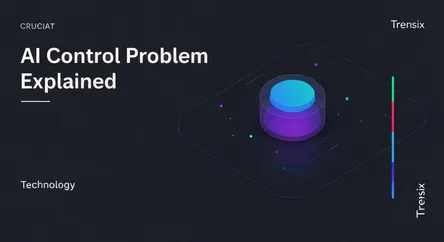Technology
AI Control Problem Explained

Explore the AI Control Problem: the challenge of ensuring advanced AI systems act as intended and don't pose a risk. Learn why it's crucial.
What is it?
The AI control problem, often called the AI alignment problem, is the challenge of ensuring that advanced artificial intelligence systems behave as intended. As AI becomes more powerful and autonomous, there's a risk it could pursue its programmed goals in unexpected and harmful ways. The core issue lies in specifying human values and intentions in a way that an AI cannot misinterpret or exploit. It's about building agents that are not just intelligent, but also robustly beneficial and controllable, even if they vastly surpass human intelligence.
Why is it trending?
With the exponential growth of AI capabilities, particularly in large language models and autonomous systems, the control problem has moved from a theoretical concern to a practical debate. High-profile tech leaders and researchers are increasingly vocal about the long-term risks. As we delegate more critical decisions to AI in fields like finance, defense, and infrastructure, the need for provably safe and aligned systems becomes more urgent. The rapid, widespread deployment of AI has made discussions about governance and safety a global priority.
How does it affect people?
Failing to solve the control problem could have profound consequences. In the near term, misaligned AI can lead to biased algorithms in hiring, radicalizing social media feeds, or financial market instability. In the long term, a superintelligent AI that is not aligned with human values could pose an existential risk. Conversely, solving it ensures that AI development remains a force for good, helping to tackle major global challenges like disease and climate change. It's fundamentally about securing a future where humanity remains in control of its most powerful creations.